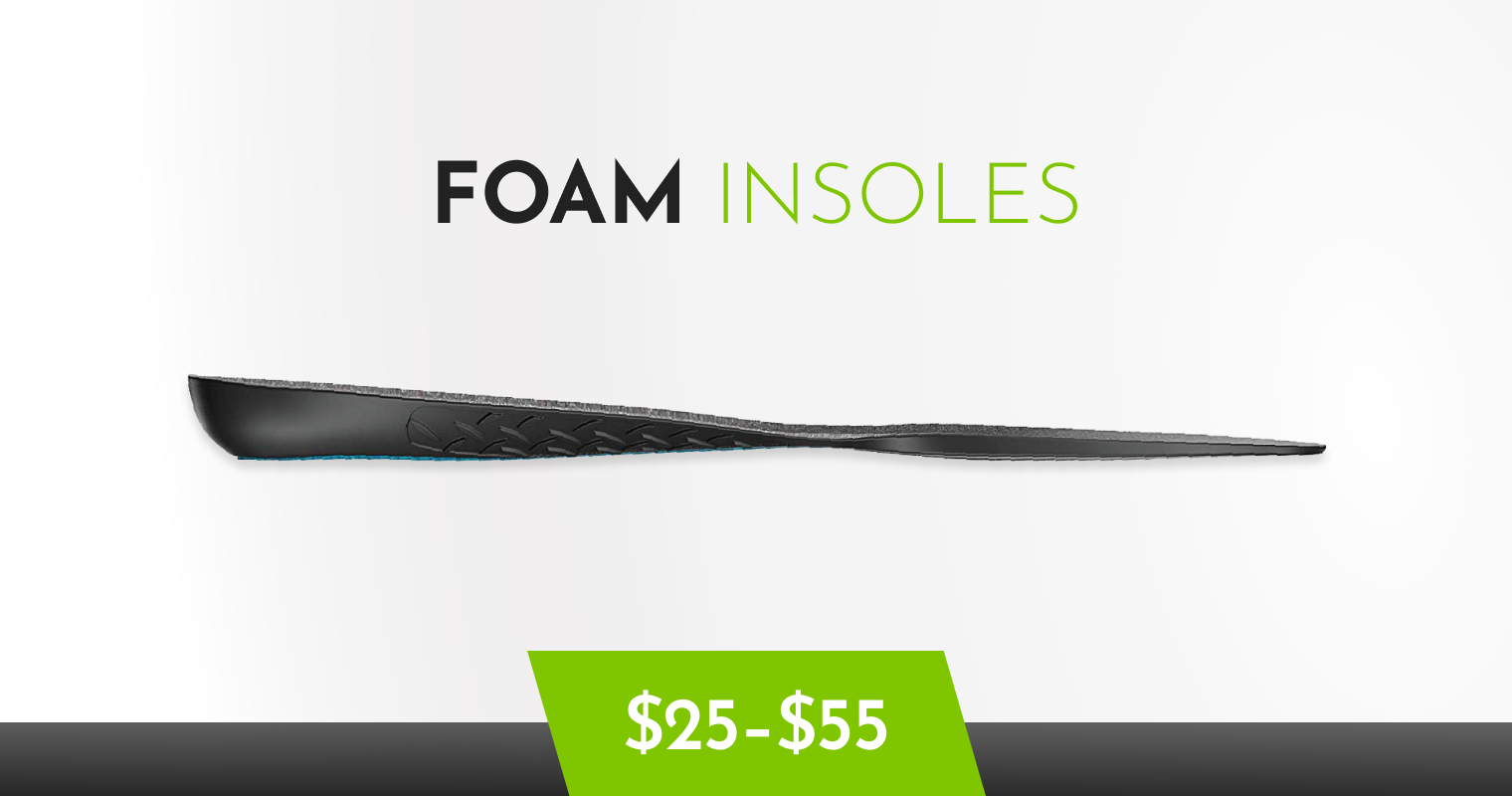HOW MUCH DO ORTHOTIC INSOLES COST?

Orthotic insoles are a common way to give off-the-rack shoes more support and help you get relief from foot pain. But with so many products on the market, it can be hard to know which is the right product and if the cost of an orthotic insole is worth it.
HOW MUCH DO ORTHOTIC INSOLES COST?
As with most products, the cost of an orthotic insole depends on the materials and the quality of the product. Cheaply made insoles using poor quality or cheap materials may be tempting, but they are likely to wear out quickly or fail to deliver on their promises. This post will give you an overview of the various kinds of orthotic insoles and cover what each type costs.
CUSTOM ORTHOTICS: HIGHEST COST OPTION
Custom orthotic insoles are often the most rigid (and uncomfortable) insoles. They are custom created to address a person’s specific foot issues and provide the most rigid support for proper alignment for people who have complications due to diabetes, severe pain due to flat feet, or other issues. Custom designed orthotic insoles will give you a perfect fit, but at a price.

Custom orthotic insoles are often prescribed by a podiatrist and requires doctor visits and fittings in addition to the cost of the actual orthotic. The cost can run $300 or more. Some health insurance companies will cover a portion of the cost, but not all insurance plans cover orthotic insoles.
The upside to the cost is that custom orthotics can last for years before wearing out, making them a good investment for those who truly need the customized support.
GEL INSOLES: CHEAPEST OPTION
Gel insoles are a common choice for people seeking relief from foot and joint pain because they are affordable, easy to find in the store, and are a relatively effective non-prescription way to provide comfort—at least in the short term.
Gel insoles cost between $10-$20 for a pair, such as the Dr Scholls brands. While they are affordable and feel good on the feet once added to the shoe, they do not last long. Gel insoles begin to break down after a few weeks of wear and may not even last a few months. While the cost is enticing, the cost of continually buying insoles can quickly exceed the cost of buying a higher-quality product.
FOAM INSOLES: A WIDE RANGE OF PRICES AND COST
There are many, many foam insoles on the market today, many of them promising long-lasting comfort for an affordable price. Foam insoles can vary in price from $25 to $55. They tend to cost more than a gel insole and are more likely to provide short-term stabilizing support and low arch support for people with foot and joint pain.

However, the quality of these insoles can vary greatly. Some are simply made of memory foam, while others have a thin base beneath the foam to provide a bit more stability. Buying an insole that is of a higher quality will get you better results and more relief at a reasonable price, providing cushioning for people who stand long periods, and stability for those who need more support.
Unfortunately, the amount of time a foam insole will last in an everyday shoe isn’t much longer than a gel insole. Plastic foam will break down in about four to six weeks, lessening the cushioning and the effectiveness of the insole. Although a foam insole may be effective, the cost compared to how long they will last should be a consideration for consumers.
SEMI-RIGID ORTHOTIC INSOLES: MODERATE PRICE FOR LONGER-LASTING RESULTS
Semi-rigid orthotic insoles cost anywhere from $50 to $100, and while this is a higher price point, they are made of firmer material that tends to last longer than foam alone. Semi-rigid orthotic insoles also provide the most benefit for the money. For example, the dynamic arch support and energy return of SelectFlex (shown here) costs one quarter the price of medical orthotics. It also features a medical grade footbed for maximum comfort. We recommend a medical grade footbed not only for comfort, but because this material is durable enough to last and not break down within a few months of wear.
If you are concerned about cushioning and comfort, there are some semi-rigid orthotics that also include a foam top cover that provides cushioning, while also giving firm arch support and stability to relieve chronic foot pain.

For those who have issues caused by overpronation of the foot, look for an insole with a medical-grade shell and a deep heel cup to ensure proper alignment of the foot as you walk. For people with flat feet, high arches, or foot pain issues like plantar fasciitis, look for a semi-rigid insole that has an adjustable arch so you can customize your level of comfort. An adjustable arch, also known as a dynamic arch, provides an added value to anyone who needs different levels of support depending on the activity, or has struggled to find an insole that gives enough arch support.
For the cost, a semi-rigid insole can provide the best of both worlds, cushioning comfort, arch support, and high-tech materials that return energy to your foot with every step, reducing pain and allowing you to be on your feet longer.



